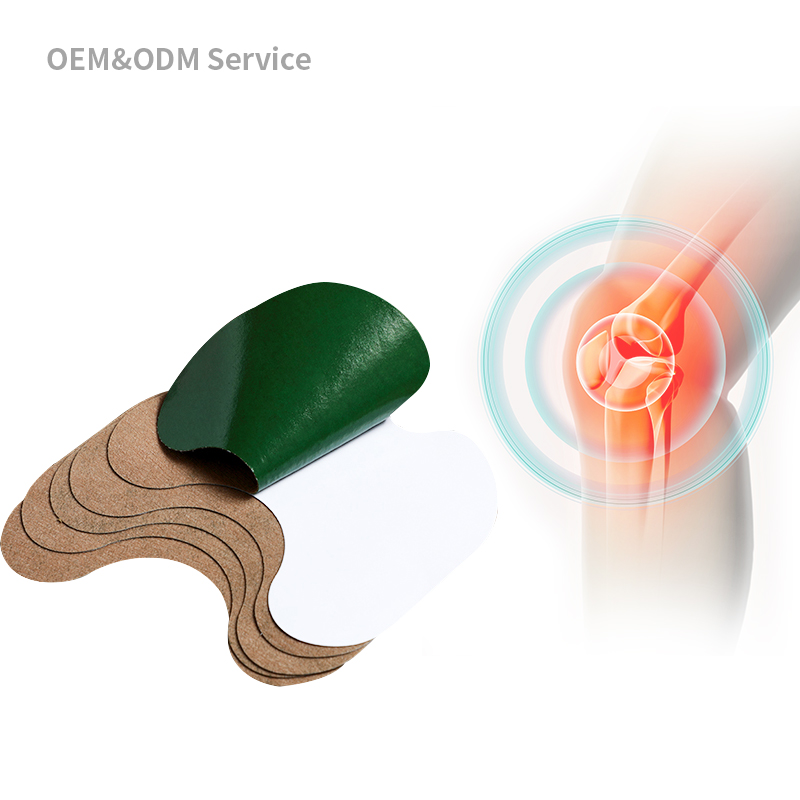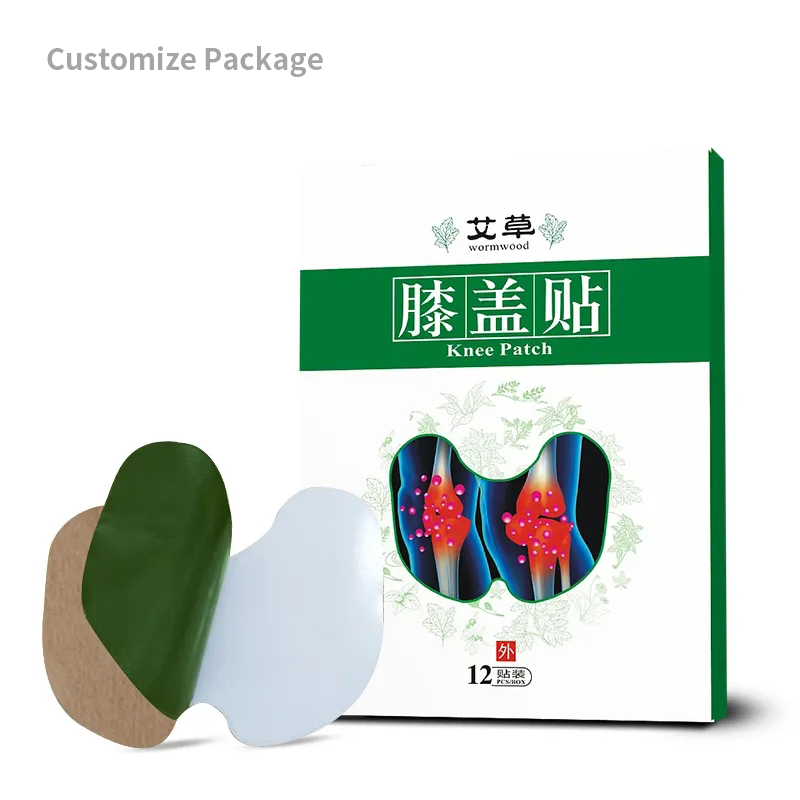Emerging Trends in Knee Pain Relief Patches
The knee pain relief patch market is evolving rapidly, driven by technological advancements, increasing consumer demand for effective pain management solutions, and the rise of custom and private label options. This article explores the latest trends in knee pain relief patches, examining how innovations and market dynamics are shaping the industry. We will also address frequently asked questions to provide a comprehensive understanding of these emerging trends.

The Growing Demand for Knee Pain Relief Patches
Market Drivers
Knee pain is a common issue affecting millions worldwide, resulting from conditions like arthritis, injuries, and overuse. The demand for non-invasive, effective pain relief solutions has led to the popularity of knee pain relief patches. These patches offer targeted relief, convenience, and minimal side effects compared to oral medications.
Key Trends in Knee Pain Relief Patches
1. Advanced Formulations
Enhanced Active Ingredients: Modern knee pain relief patches are being developed with advanced formulations that include a combination of analgesics, anti-inflammatories, and natural extracts. Ingredients such as menthol, lidocaine, diclofenac, capsaicin, and arnica are commonly used for their synergistic effects.
Innovative Delivery Systems: Knee pain relief patches are incorporating advanced transdermal delivery technologies that enhance the absorption and bioavailability of active ingredients. Technologies such as micro-needling patches and iontophoresis are gaining traction, offering deeper penetration and more effective pain relief.
2. Custom and Private Label Solutions
Customization: Custom knee pain relief patches are becoming increasingly popular. Companies are working with Knee Pain Relief Patches OEMs to develop products tailored to specific customer needs. Customization options include unique formulations, optimized dosages, and personalized packaging.
Private Label Opportunities: The rise of private label knee pain relief patches allows businesses to enter the market with their own branded products without the need for significant manufacturing investments. This trend enables smaller companies and new entrants to compete effectively in the market.
3. Natural and Organic Ingredients
Consumer Preference: There is a growing consumer preference for natural and organic products. Knee pain relief patches made with natural ingredients such as herbal extracts, essential oils, and organic compounds are gaining popularity. These products are perceived as safer and more environmentally friendly.
Sustainable Sourcing: Knee pain relief patches suppliers are focusing on sustainable sourcing of natural ingredients to meet consumer demand and regulatory requirements. This trend is driven by the increasing awareness of environmental impact and sustainability practices.
4. Integration of Smart Technology
Wearable Tech: The integration of smart technology into knee pain relief patches is an emerging trend. Patches equipped with sensors can monitor pain levels, track usage, and provide real-time feedback to users and healthcare providers. This data-driven approach enhances pain management and treatment outcomes.
App Connectivity: Some knee pain relief patches are being designed to connect with mobile apps, allowing users to track their pain relief progress, receive reminders, and access personalized treatment plans. This connectivity improves user engagement and adherence to treatment.
5. Focus on Specific Consumer Segments
Athlete-Focused Patches: Knee pain relief patches designed specifically for athletes are becoming more common. These patches cater to the unique needs of athletes, providing quick and effective relief for sports-related injuries and overuse.
Senior-Friendly Designs: With an aging population, there is an increased focus on knee pain relief patches that cater to seniors. These patches often feature easy application methods, gentle formulations, and ergonomic designs to ensure comfort and ease of use.
6. Regulatory Compliance and Quality Assurance
Stringent Standards: Knee pain relief patches manufacturers are adhering to stringent regulatory standards to ensure product safety and efficacy. Compliance with guidelines from agencies such as the FDA and EMA is crucial for market entry and consumer trust.
Quality Assurance: High-quality manufacturing practices, rigorous testing, and transparent labeling are becoming standard in the industry. These practices ensure that products deliver consistent and reliable pain relief.
Questions Related to Emerging Trends in Knee Pain Relief Patches
1. What are the latest advancements in knee pain relief patch formulations?
Advancements include the use of enhanced active ingredients, such as a combination of analgesics and anti-inflammatories, and innovative delivery systems like micro-needling patches and iontophoresis for improved absorption and efficacy.
2. How are custom and private label knee pain relief patches shaping the market?
Custom and private label patches allow businesses to offer tailored products that meet specific customer needs. This trend enables differentiation, brand building, and competitive entry into the market with personalized solutions.
3. Why is there a growing preference for natural and organic knee pain relief patches?
Consumers prefer natural and organic patches due to their perceived safety, environmental friendliness, and minimal side effects. Sustainable sourcing of ingredients also aligns with increasing environmental awareness.
4. What role does smart technology play in the development of knee pain relief patches?
Smart technology integration includes wearable patches with sensors that monitor pain levels and track usage, as well as app connectivity for personalized treatment plans and real-time feedback, enhancing pain management and user engagement.
5. How are manufacturers addressing the needs of specific consumer segments?
Manufacturers are developing patches tailored to specific groups, such as athletes and seniors, with features like quick relief for sports injuries and ergonomic designs for ease of use by older adults.
6. What measures are being taken to ensure the quality and regulatory compliance of knee pain relief patches?
Manufacturers are adhering to strict regulatory standards, conducting rigorous testing, and implementing high-quality manufacturing practices. Compliance with guidelines from agencies like the FDA and EMA ensures product safety and efficacy.






